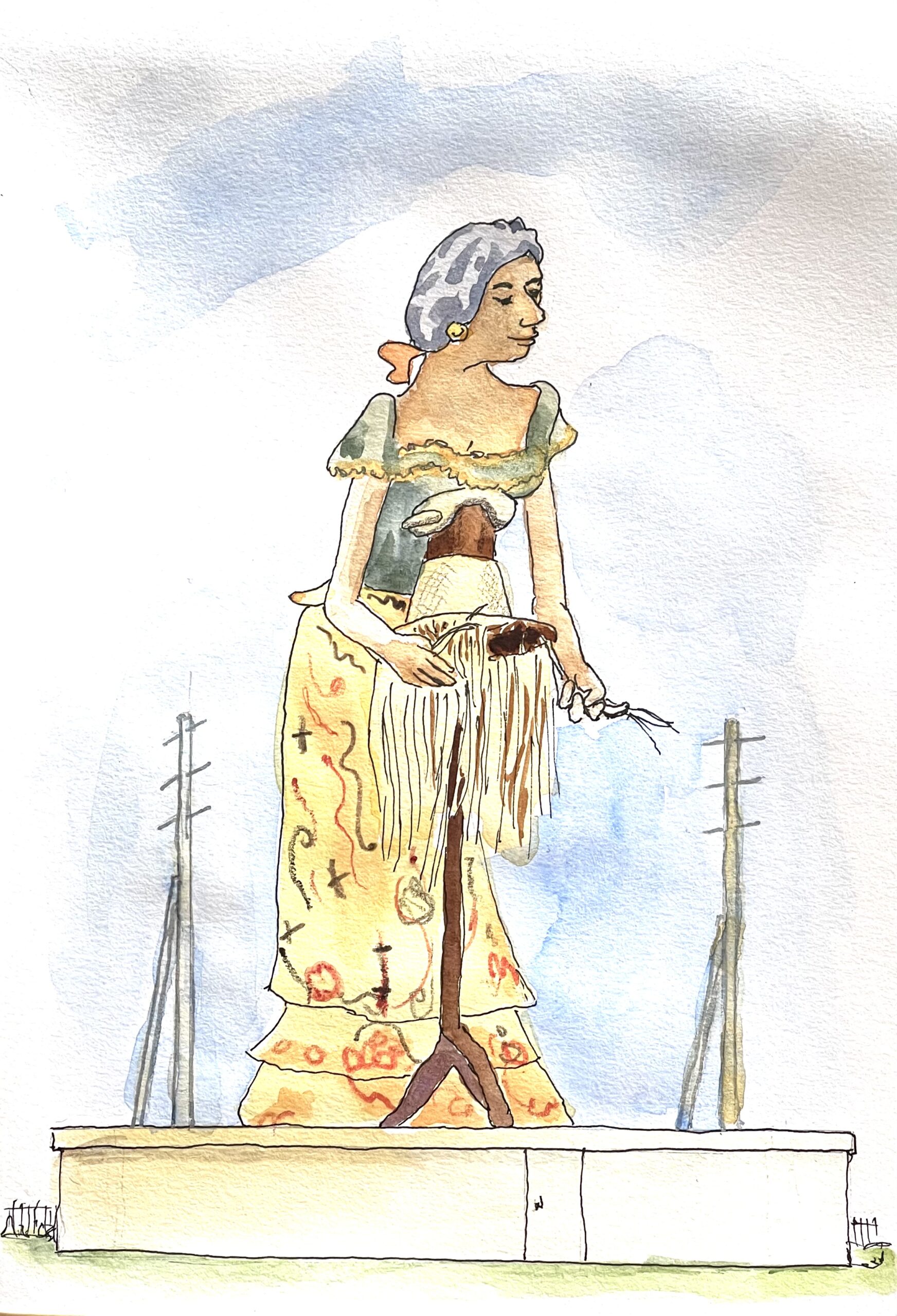Day 15
Sunday, January 29 Manta, Ecuador. Weather: Sunny, pleasantly warm
The Equator! On Days 13–14 we sailed past Nicaragua, Costa Rica, Panama, and Columbia.

From the descriptions online I figured Manta would be an all-business, soulless sort of place. I expected I wouldn’t be writing much more about it than, say, Puerto Chiapas. I was surprised. It’s much more modern than I expected, more vibrant. This may be in part due to the young, energetic and charismatic mayor they’ve had for the past four years, who has put in a lot of renovations and improvements. He’s up for re-election next Sunday, and the town is noisy with it. Lots more cars here, and a lot of them are lovingly hopped-up or set up with ear-pounding audio systems. We heard a number of them cruising around town promoting their candidates.
Mary found a great excursion. We visited the city’s amazingly good fish market under a huge pavilion near the port. Clean and airy. I couldn’t even smell the fish! Not a whole lot of variety. Mostly various species of tuna, mahi-mahi, some flat silvery fish that are local there; a few octopus and various shellfish and shrimp. But everything fresh as could be.
The tuna-can-on-stilts landmark that I saw online is gone, the guide said. It has been replaced by a tasteful and well done statue of a leaping yellow-tail tuna, closer to the ground.
Our lunch in St. Sebastian, a seaside resort town frequented by locals, was really good. It also had a landmark sculpture, at the turnoff from the main road. A swordfish, if I remember correctly. It seems that every town has one of these, not unlike the herd of bears that populate New Bern.
We were then driven up into the nearby mountains. Very different climate and vegetation there. Nice roads, but with a lot of small rock falls intruding on the edges. There were plans to build a big petroleum refinery up there, but COVID hit. The housing that had been built for the expected workforce was commandeered by the mayor as a quarantine facility.
Further on we came on a park, in a protected forest. Local plants and animals. We were hoping for monkeys, but they didn’t show. Neither did the resident tarantula, when the guide tried to tease it from its hole. Still pleasant.
Part of the draw of this tour was to go to Montecristi, where panama hats are made. Much was made of the fact that they aren’t made in Panama at all, the Teddy Roosevelt story, etc. The entrance to Montecristi has a huge statue of a woman bending over the curious stool they have there, weaving a hat. Mary was very taken with it.
We stopped in a hat shop and the process was demonstrated for us. A tiny old lady was finishing the weaving of a hat, the owner demonstrated the preparation of the “straw” they use—fibers from the leaves of the palm you get on Palm Sunday. He also has an elaborate and fancy press for forming the hat.
The production has several steps, beginning with the separation of fibers from the palm leaves into various thicknesses: the thinner, the finer and more expensive the hat. Then the hats are actually woven as a cottage industry scattered around the area. It’s done by women, bending over those odd stools or pedestals. Really backbreaking work, and something that can only be done in rather short bursts of time. The resulting blanks then come to a store like this, with a lot of the fibers bunched around the edge. Then the store has a specialist who finishes off the edge according to its style, after which it’s put through the press to create whatever style of crown is desired. This also puts a kind of finish to the fibers, very like the smooth finish of calendared paper. Finally a band and inside liner are sewn on, simultaneously. Interesting, if you like that sort of thing. I did.
We did buy two hats there, for $120. Mine was listed at $100, Mary’s at $45, and we successfully bargained for a lower price. I have a similar fedora that I paid $100 for. I think it would probably be about $25 here.
